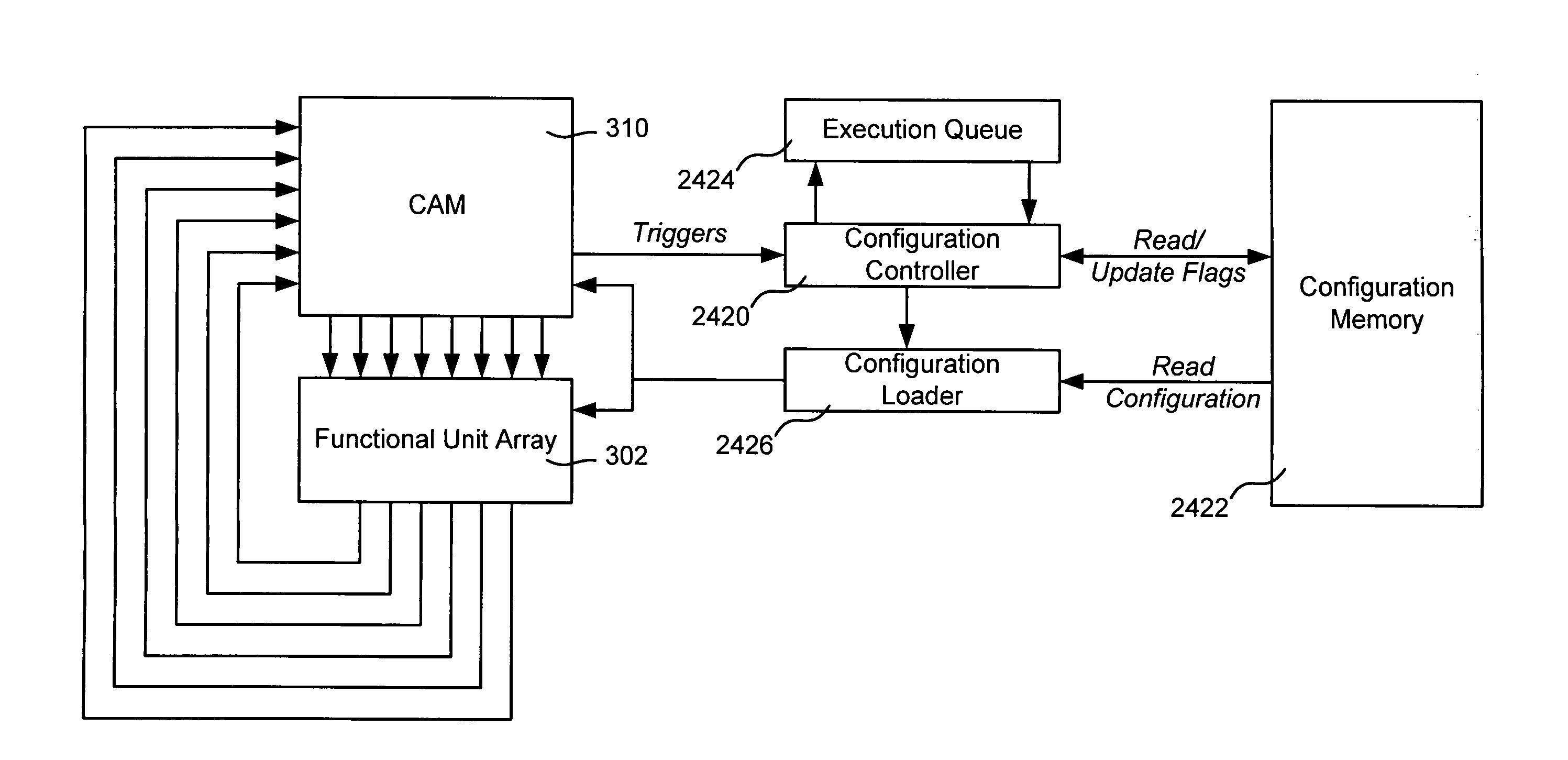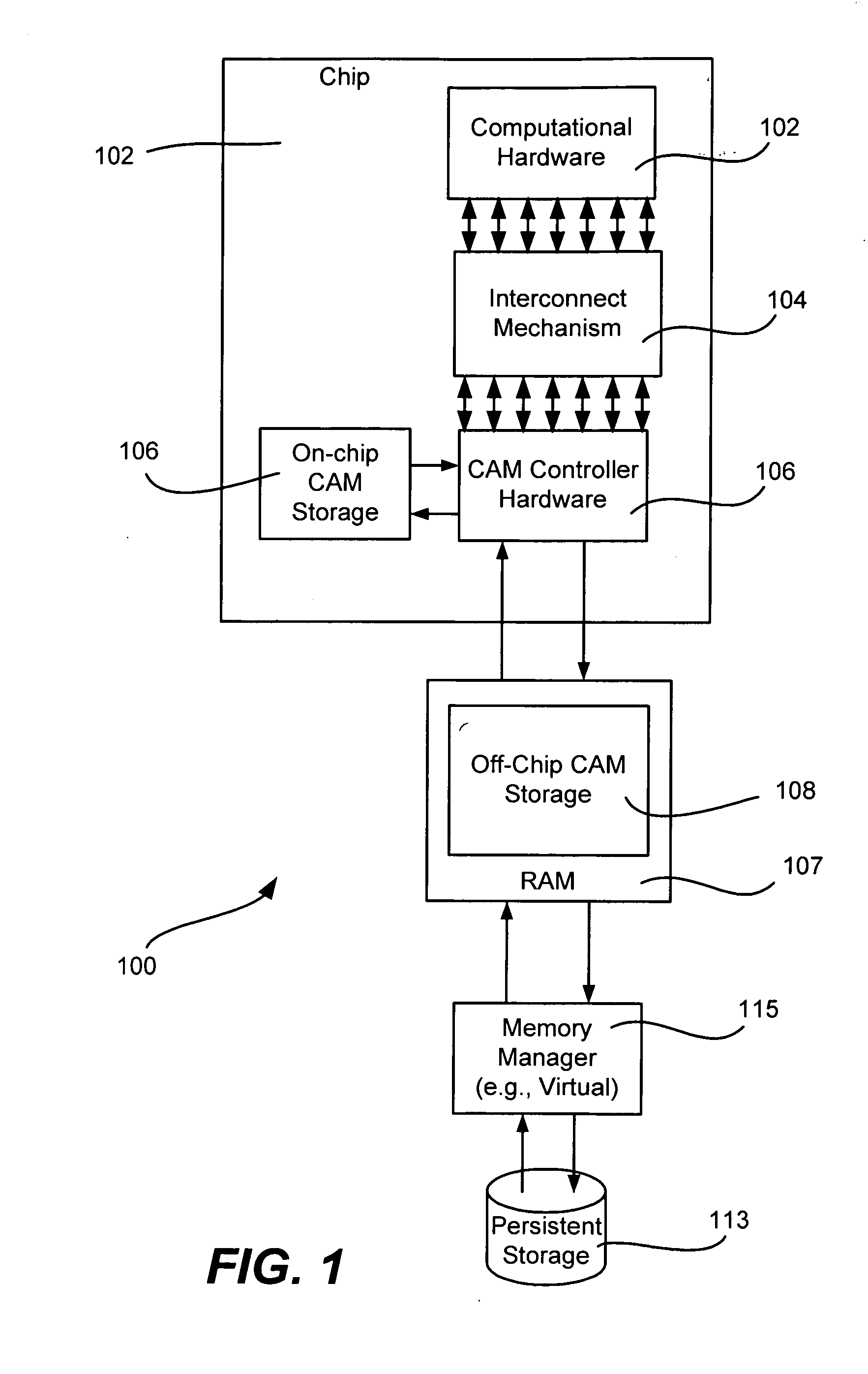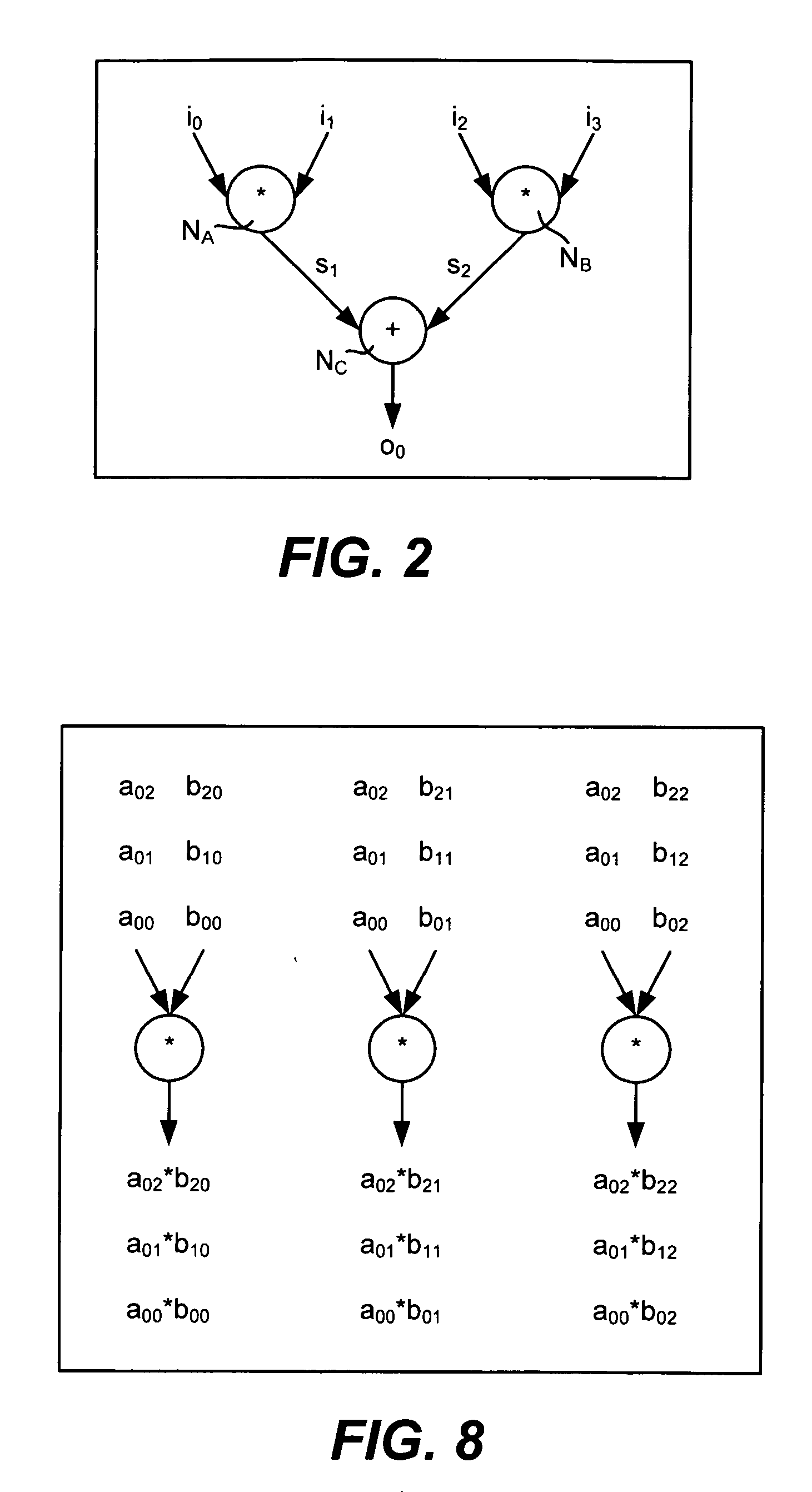Conditional execution via content addressable memory and parallel computing execution model
a technology of content addressable memory and execution model, applied in the field of parallel computing, can solve the problems of complex problem, inability to extract parallelism in this way, and inability to meet the limits of such conventional computing technology,
- Summary
- Abstract
- Description
- Claims
- Application Information
AI Technical Summary
Benefits of technology
Problems solved by technology
Method used
Image
Examples
Embodiment Construction
Content Addressable Memory (CAM) Architecture
[0046] The content addressable memory (CAM) architecture of the present invention is generally aimed at providing a platform for performing relatively demanding computational tasks in a way that is easy to program, has a practical implementation and can be applied to general purpose problems. There are a wide variety of computing problems and tasks that are amenable to parallelization, such as graphics, speech processing, artificial intelligence, simulation and modeling, biological synthesis, data mining, data processing, databases, server applications, and so forth. Many of these applications are well known and are the domain of supercomputers.
[0047] Notwithstanding, the present invention is not limited to any particular data processing applications. In general, while one described example architecture of the present invention attempts to address some or all of the above-identified problems and tasks, the CAM architecture may be scale...
PUM
 Login to View More
Login to View More Abstract
Description
Claims
Application Information
 Login to View More
Login to View More - R&D
- Intellectual Property
- Life Sciences
- Materials
- Tech Scout
- Unparalleled Data Quality
- Higher Quality Content
- 60% Fewer Hallucinations
Browse by: Latest US Patents, China's latest patents, Technical Efficacy Thesaurus, Application Domain, Technology Topic, Popular Technical Reports.
© 2025 PatSnap. All rights reserved.Legal|Privacy policy|Modern Slavery Act Transparency Statement|Sitemap|About US| Contact US: help@patsnap.com



